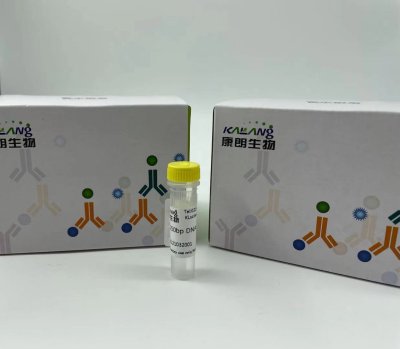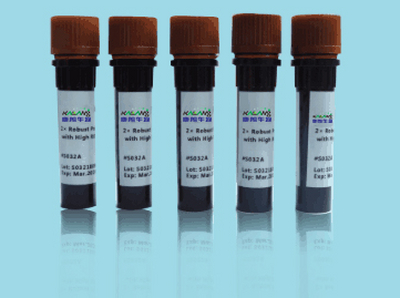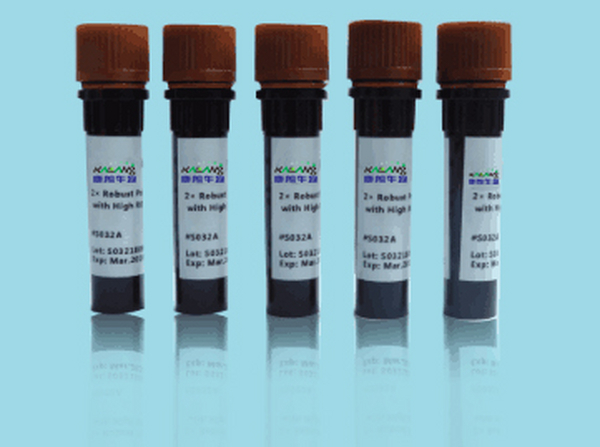QQ:3002763590


客服电话:021-61998208
Anti NRP1 polyclonal antibody
NRP1抗体
Anti NRP1 polyclonal antibodyNeuropilin-1 (NRP1) is a a 130–140 kDa transmembrane glycoprotein expressed by endothelial, dendritic, and regulatory T cells, as well as several other normal cell types and malignant tumor cells. NRP1 was first identified as a semaphorin (SEMA) receptor, involved in axonal guidance in embryonic development. NRP1 was also shown to act as a receptor for vascular endothelial growth factor (VEGF) and a promoter of angiogenesis through its interaction with VEGF-A165 (and other VEGFs) and the receptor tyrosine kinase (RTK) VEGF-R2. NRP1 plays versatile roles in angiogenesis, axon guidance, cell survival, migration, and invasion.
Anti MAPK9 polyclonal antibody
MAPK9抗体
Anti MAPK9 polyclonal antibodyThe protein encoded by this gene is a member of the MAP kinase family. MAP kinases act as an integration point for multiple biochemical signals, and are involved in a wide variety of cellular processes such as proliferation, differentiation, transcription regulation and development. This kinase targets specific transcription factors, and thus mediates immediate-early gene expression in response to various cell stimuli. It is most closely related to MAPK8, both of which are involved in UV radiation induced apoptosis, thought to be related to the cytochrome c-mediated cell death pathway. This gene and MAPK8 are also known as c-Jun N-terminal kinases. This kinase blocks the ubiquitination of tumor suppressor p53, and thus it increases the stability of p53 in nonstressed cells. Studies of this gene's mouse counterpart suggest a key role in T-cell differentiation. Several alternatively spliced transcript variants encoding distinct isoforms have been reported. [
Anti REG1b polyclonal antibody
REG1b抗体
Anti REG1b polyclonal antibodyReg protein is stimulated during the regeneration of pancreatic islets. In human, there are four REG family genes,REG 1 alpha, REG 1 beta, REG-related sequence (RS) and HIP/PAP. These Reg-related proteins are classified into four subfamilies according to their amino-acid sequences, but they share a similar structure and physiological function.
Anti Ki67 polyclonal antibody
Ki67抗体
Anti Ki67 polyclonal antibodyThe Ki-67 protein (also known as MKI67) is a cellular marker for proliferation. Ki67 is present during all active phases of the cell cycle (G1, S, G2 and M), but is absent in resting cells (G0). Cellular content of Ki-67 protein markedly increases during cell progression through S phase of the cell cycle. Therefore, the nuclear expression of Ki67 can be evaluated to assess tumor proliferation by immunohistochemistry. It has been demonstrated to be of prognostic value in breast cancer. In head and neck cancer, several studies have reported an association between high proliferative activity and poorer prognosis.
Anti CD71 polyclonal antibody
CD71抗体
Anti CD71 polyclonal antibodyCD71, also known as transferrin receptor protein 1 (TfR1), is a transmembrane glycoprotein composed of two disulfide-linked monomers, each of 90 kDa molecular weight. Each monomer binds one holo-transferrin molecule creating an iron-Tf-TfR complex which enters the cell by endocytosis. CD71 is present on actively proliferating cells and is essential for iron transport into proliferating cells.
icon Anti CX43 polyclonal antibody
CX43抗体
Anti CX43 polyclonal antibodyConnexin-43 (Cx43, also known as gap junction alpha-1), a member of connexin family, plays essential roles in gap junction communication that facilitates direct communication among adjacent cells (PMID: 12270943). Usually, six connexin proteins oligomerize into a hemi-channel or connexon during intercellular channel formation (PMID: 12270943). Mutations of Cx43 may cause a series of diseases such as oculodentodigital dysplasia (ODDD), syndactyly 3 (SDTY3), hypoplastic left heart syndrome 1 (HLHS1) and so on (PMID: 18161618, 1472936, 1147490).
Anti FBP1 polyclonal antibody
FBP1抗体
Anti FBP1 polyclonal antibodyFBP1(Fructose-1,6-bisphosphatase 1) is also named as FBP and belongs to the FBPase class 1 family. It catalyzes the hydrolysis of fructose-1,6 bisphosphate to fructose-6-phosphate and inorganic phosphate. This reaction is an important regulatory site of gluconeogenesis. Defects in FBP1 are the cause of fructose-1,6-bisphosphatase deficiency (FBPD)(PMID:12126934).
Anti NRP1 polyclonal antibody
NRP1抗体
Anti NRP1 polyclonal antibodyNeuropilin-1 (NRP1) is a a 130–140 kDa transmembrane glycoprotein expressed by endothelial, dendritic, and regulatory T cells, as well as several other normal cell types and malignant tumor cells. NRP1 was first identified as a semaphorin (SEMA) receptor, involved in axonal guidance in embryonic development. NRP1 was also shown to act as a receptor for vascular endothelial growth factor (VEGF) and a promoter of angiogenesis through its interaction with VEGF-A165 (and other VEGFs) and the receptor tyrosine kinase (RTK) VEGF-R2. NRP1 plays versatile roles in angiogenesis, axon guidance, cell survival, migration, and invasion.
Anti MAPK13 polyclonal antibody
MAPK13抗体
Anti MAPK13 polyclonal antibodyMAPK13(Mitogen-activated protein kinase 13) is also named as PRKM13, SAPK4 and belongs to the protein kinase superfamily. MAPK13 is one of the four p38 MAPKs which play an important role in the cascades of cellular responses evoked by extracellular stimuli such as proinflammatory cytokines or physical stress leading to direct activation of transcription factors such as ELK1 and ATF2.
最新动态
-

Anti-GNGT1 KL20092-001(50ul)
2021-10-11 -

Anti-GNGT1 antibody(50ul) KL20093-001
2021-10-11 -

MUC5AC (PT2058) mouse Monoclonal Antibody
2021-01-06 -

mOrange mouse Monoclonal Antibody(Mix)
2021-01-05
热门标签
- Histone H3 rabbit Polyclonal Antibody Histone H3抗体
- EGFR rabbit Polyclonal Antibody EGFR抗体
- Cy3 Conjugated
- AbFluor™ 555 Conjugated
- AbFluor™ 680 Conjugated
- AbFluor™ 350 Conjugated
- AbFluor™ 647 Conjugated
- AbFluor™ 594 Conjugated
- AbFluor™ 405 Conjugated
- Cy5 Conjugated
- AbFluor™ 488 Conjugated
- Cyclophilin B抗体 Cyclophilin B Monoclonal Antibody(2B10)
- COX IV抗体 COX IV Monoclonal Antibody(6C8)
- PCNA抗体 PCNA Monoclonal Antibody(12D10)
- FAK rabbit Polyclonal Antibody FAK抗体
邮箱:3002763590@qq.com
电话:021-61998208

扫码关注微信公众号






